I have an enum say EnumA with values X, Y, Z, P, Q R
I have created a function called Sort(linqquery as parameter) in C#, .NET version 4.7.2
I should be able to write a function parameter something like
tt=>tt.X.Ascending().ThenBy(tt.Y).ThenBy(tt.P.Descending())
The function body will sort the returning result by A ascending then by Y and then P Descending.
It is only one example of I want to achieve.
Another Example:
RemoveColumn ( LINQquery as parameter)
tt=>tt.X && tt.Y && tt.Q
[{ "X": "Name", "Y": "Hello", "Z": 10, "P": "Some value", "Q": " Hello Again", "R": "my data"}, { "X": " Ha ha ha ", "Y": "by bye", "Z": 100, "P": " value", "Q": " Again", "R": "m data"},{ "X": " Your Name", "Y": "why", "Z": 9, "P": " Ok Some value", "Q": " Music", "R": " atda" }, { "X": "John", "Y": "Nuew", "Z": 10, "P": "Why your value", "Q": " Ta ta ata Again", "R": " cycle" }]
Above is my sample JSON also. Based on linq parameter i will filter or sort this JSOn before being returned by the function. How do I be able to pass LINQ as parameter?
